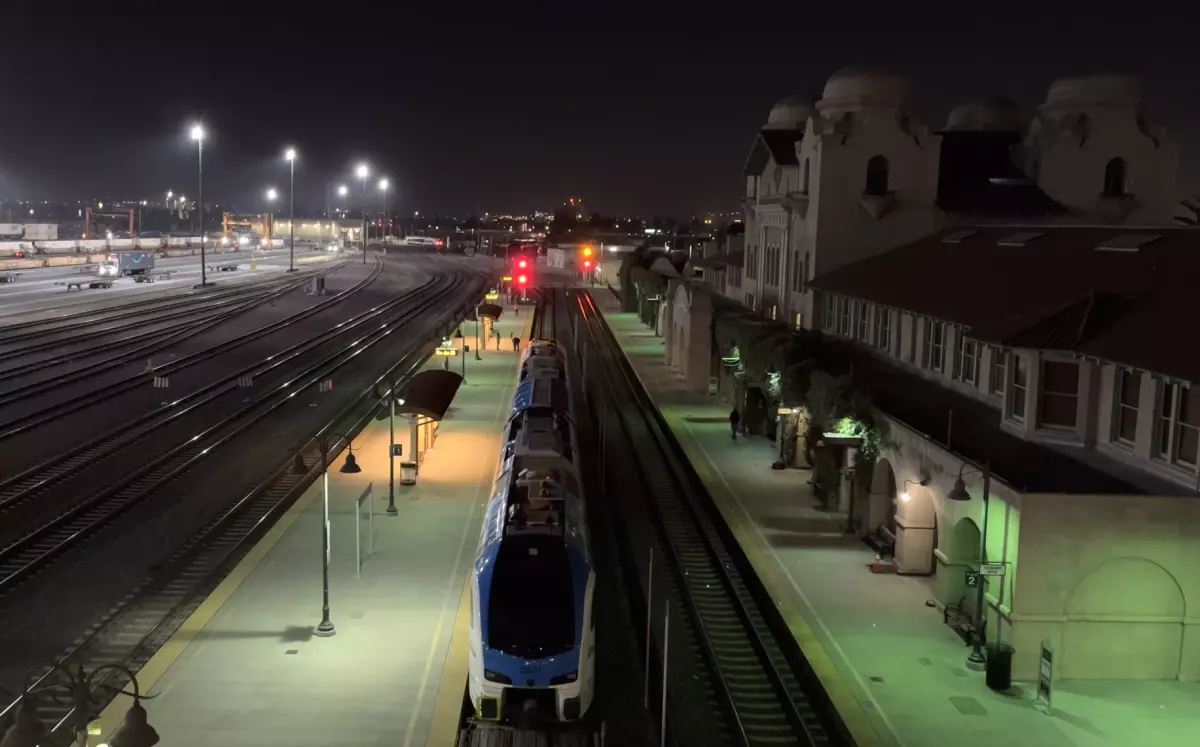First-of-its-kind zero-emissions train rolls into San Bernardino
Andrew J. Campa
Los Angeles Times
August 17, 2024
 San Bernardino County Transit Authority debuts its new zero-pollution passenger train, known as ZEMU, short for Zero Emission Multiple Unit. (San Bernardino County Transit Authority)
San Bernardino County Transit Authority debuts its new zero-pollution passenger train, known as ZEMU, short for Zero Emission Multiple Unit. (San Bernardino County Transit Authority)
The first zero-emission passenger train in the U.S. has rolled into San Bernardino, and passengers should be able to ride the clean-energy line early next year, transportation authorities said. San Bernardino County Transit Authority presented the $20-million, 108-passenger train — the Zero Emission Multiple Unit, or ZEMU — at a public ceremony Thursday at the San Bernardino Depot Train Station.
ZEMU is North America’s first self-powered, zero-emission passenger train to meet Federal Railroad Administration requirements, according to the transit authority. “What we have done with ZEMU is transformational,” San Bernardino County Transit Authority President Ray Marquez said in a statement. “The development of the train has solidified SBCTA’s place as an innovator in clean passenger rail here in the Inland Empire, throughout the state and the nation.”
The train will serve the Arrow Line, a 9-mile transit line with five stops between downtown San Bernardino and the University of Redlands. . . . The Arrow Line debuted in October 2022 and allows for westbound connections to Los Angeles’ Union Station.
 ZEMU, a clean-energy train, arrives June 30 in San Bernardino. (San Bernardino County Transit Authority)
ZEMU, a clean-energy train, arrives June 30 in San Bernardino. (San Bernardino County Transit Authority)
. . . .



